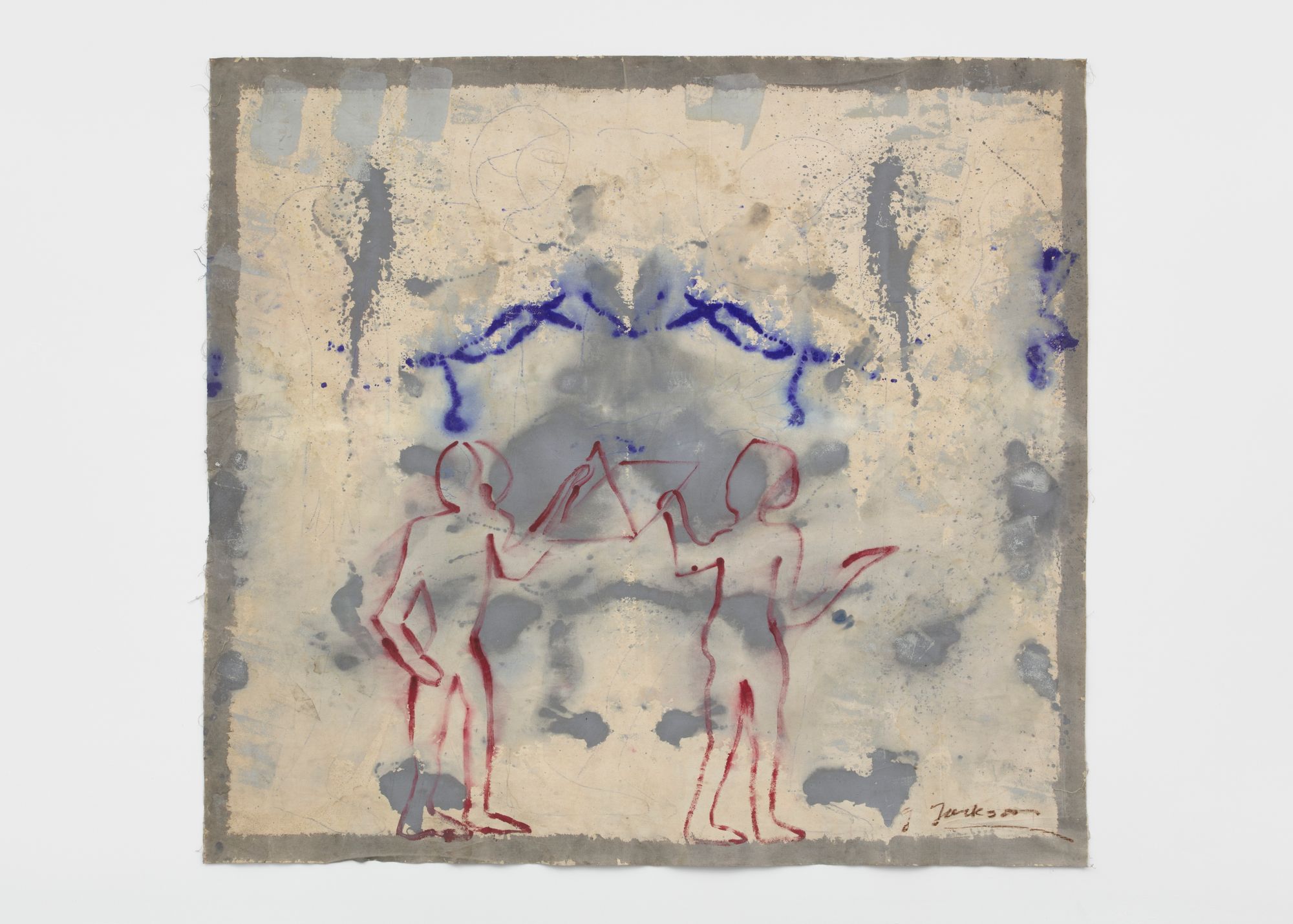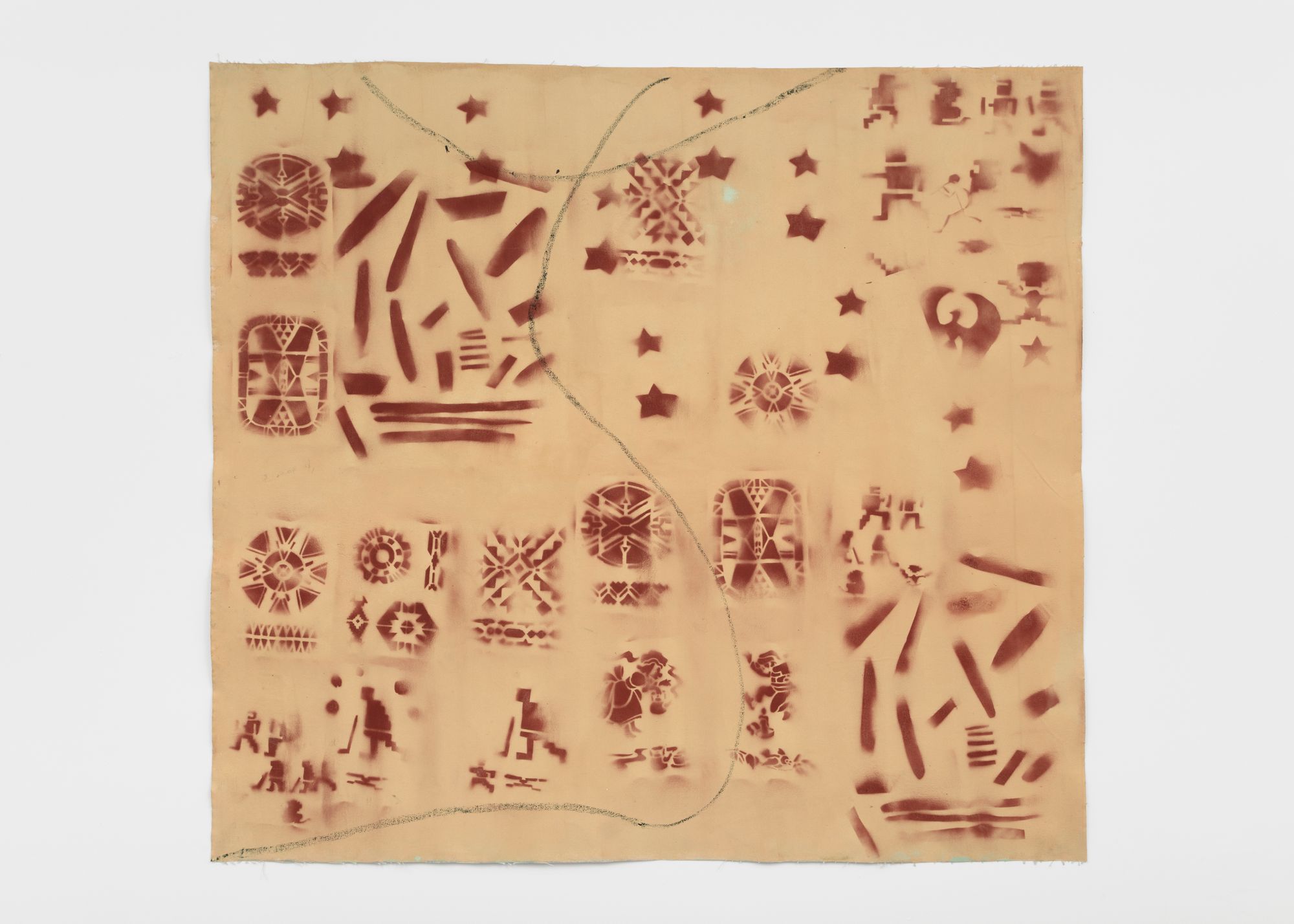Gerald Jackson
Independent 20th Century: Gerald Jackson
Sept. 8–Sept. 11, 2022
Gordon Robichaux and Parker Gallery present rarely seen historical paintings by polymath artist Gerald Jackson (b. 1936, Chicago, IL), following our recent exhibitions of his work in New York and Los Angeles.
In 1963, after a brief stint in the US Army, Jackson moved to New York from Chicago’s South Side. Deconstructing his past—characterized by racial divisions and the looming threat of violence—Jackson immersed himself in a creative community of artists and musicians including David Hammons, Ornette Coleman, McArthur Binion, Ellsworth Ausby, Peter Bradley, Keith Haring, and Stanley Whitney among others.
The paintings in this presentation date from the 1980s and were made while Jackson was living in an industrial loft on the Bowery in New York City. During this time, he used a variety of materials including acrylic, spray paint, and stencils to create paintings with bold, graphic figures and symbols. During the 1970s, Jackson began developing a lexicon of glyphs—both ready-made and his own—which he adopted for their immediacy and invocation of complex ideas, histories, and cultural and spiritual traditions.
By the 1980s, these images appeared throughout his work in the form of ancient pictograms, sacred geometry, tribal motifs, and graphic figures that dance with improvisational streaks of paint and oil pastel on the surface of stained and painted canvases. In a recent review of Jackson’s work, critic Jonathan Griffin observes, "the paintings evoke the fury and freedom of a graffitied subway wall…and give the sense of Jackson forging an unsteady alliance between his present-day reality, his imaginative aesthetic projections and allusions to the past, both ancient and personal".
Jackson employs his distinct arsenal of influences and ideas—poetry and jazz, Egyptian and Native American belief systems, as well as pictographs, graffiti, celestial bodies, and the urban landscape—as conduits for self-reinvention, transcendence, and liberation. Combining these wide-ranging histories with his own experiences, Jackson’s art reverberates with charged, frenetic energy. Griffin explains, "It is their palpable histories—manifested in their materiality and in the confluence between their maker’s biography and the story of race and class in the US—that imbues them with talismanic power".
In 1983, the artist’s large, unstretched painting, The Card Players, was included in the historic Black and White Show, curated by Lorraine O’Grady at Kenkeleba Gallery in New York’s East Village. The painting features a group of graphic, black and white pictographic figures. In O’Grady’s 2009 Artforum essay reflecting on the exhibition, she writes, "Gerald had a studio on the Bowery in the ’70s and ’80s. He was a friend of Keith [Haring]’s. I wonder if the figure in the lower right may have influenced the radiant child".
Recent solo exhibitions include those held at Parker Gallery and Marc Selwyn in Los Angeles (2022), and at Gordon Robichaux and White Columns in New York (both 2021). His work is included in the collections of the Hammer Museum, Los Angeles; The Metropolitan Museum of Art, New York; the Museum of Modern Art, New York; The Studio Museum in Harlem, New York; and the Herbert F. Johnson Museum of Art, Cornell University, Ithaca, NY.


Unknown, c. 1980's, Paint on canvas, 71 × 77 inches

Unknown, c. 1980's, Paint, spray paint and oil stick on canvas, 65 x 70 inches

Unknown, c. 1980's, Paint on canvas, 71 x 74 inches

Unknown, c. 1980's, Paint on canvas, 115 x 82 inches